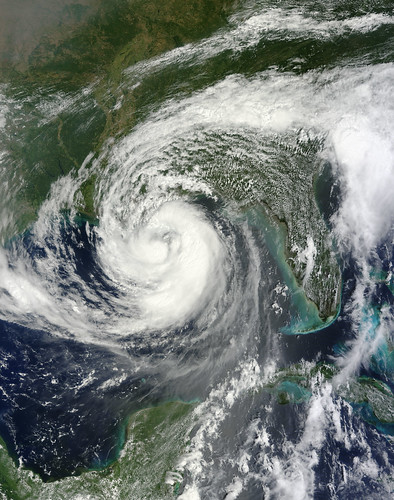By James Ross
Management Consultant, Southern District
 |
| Hurricane Isaac, image courtesy of NASA Goddard, Creative Commons |
My family and I decided to weather the storm at home because the stress and expense of evacuation was more than we felt was worthwhile for the predicted category 1 hurricane. True to forecasts, Isaac turned out be significantly less force than Katrina’s category 4 strength. However, Isaac was slow and stayed over New Orleans for two days, causing a large amount of flooding and power outages. The power at our home went out quickly and stayed that way for six days. After three days in the heat and darkness, we moved to my in-laws house, in Orleans Parish because they were lucky enough to have electricity.
All told, there was significant damage to the storm, but a much smaller loss of life than we had seven years ago. With Isaac, one of the biggest issues was a lack of power. After Katrina, the local utility company, Entergy, started charging an extra fee which was to go toward infrastructure improvements. While newer communities have underground power, older communities had power lines fallen in the street — and, of course, no electricity. To protect its employees, Entergy waited until winds had calmed before sending out work crews. This angered some people who felt repairs should have been made earlier, and led to lots of finger pointing, which is typical of New Orleans.
 |
| Image of Plaquemines Parish flooding, courtesy of Creative Commons |
As a NeighborWorks employee, I took steps before and after the storm to check in on our local allies. The Friday before we got at least two phone numbers from each of our affiliates and our partners in those areas predicted to be impacted by the storm. Later, I reached out to all our network organizations, talking via text messages and Facebook to make sure everything was ok, which people really appreciated.
The Southern District is planning to assist organizations in impacted areas. So far, NeighborWorks America has issued $110,000 in new grant funds to our partners impacted by Isaac in Louisiana and Mississippi. The grants will increase these organizations' capacity to coordinate outreach and volunteer efforts in their targeted communities. A full list of the recipient groups is below:
United Houma Nation: ($35,000) United Houma Nation’s area of concentration includes lower Jefferson, Terrebonne & Plaquemines parishes which includes the cities of Braithwaite, Houma and Lafitte which all experienced significant damage and home loss due to the floods. In Houma, the United Houma Nation, a Louisiana state recognized Native American tribe, estimates a total of 3,300 tribal citizens were directly impacted by Hurricane Isaac. This represents 25 percent of the total population of tribal citizens residing within the UHN service area.
 |
Hancock Housing Resource Center: ($30,000) The property damages caused by Hurricane Isaac drastically increased the demand for Hancock Housing Resource Center services. The grant will increase HHRC capacity to provide home repair/minor rehab project for residents of hard hit areas of Bay St. Louis and Waveland.
Neighborhood Housing Services of New Orleans: ($25,000) There was massive flooding on the north shore, including the city of Covington. Neighborhood Housing Services of New Orleans is providing services to this community.
